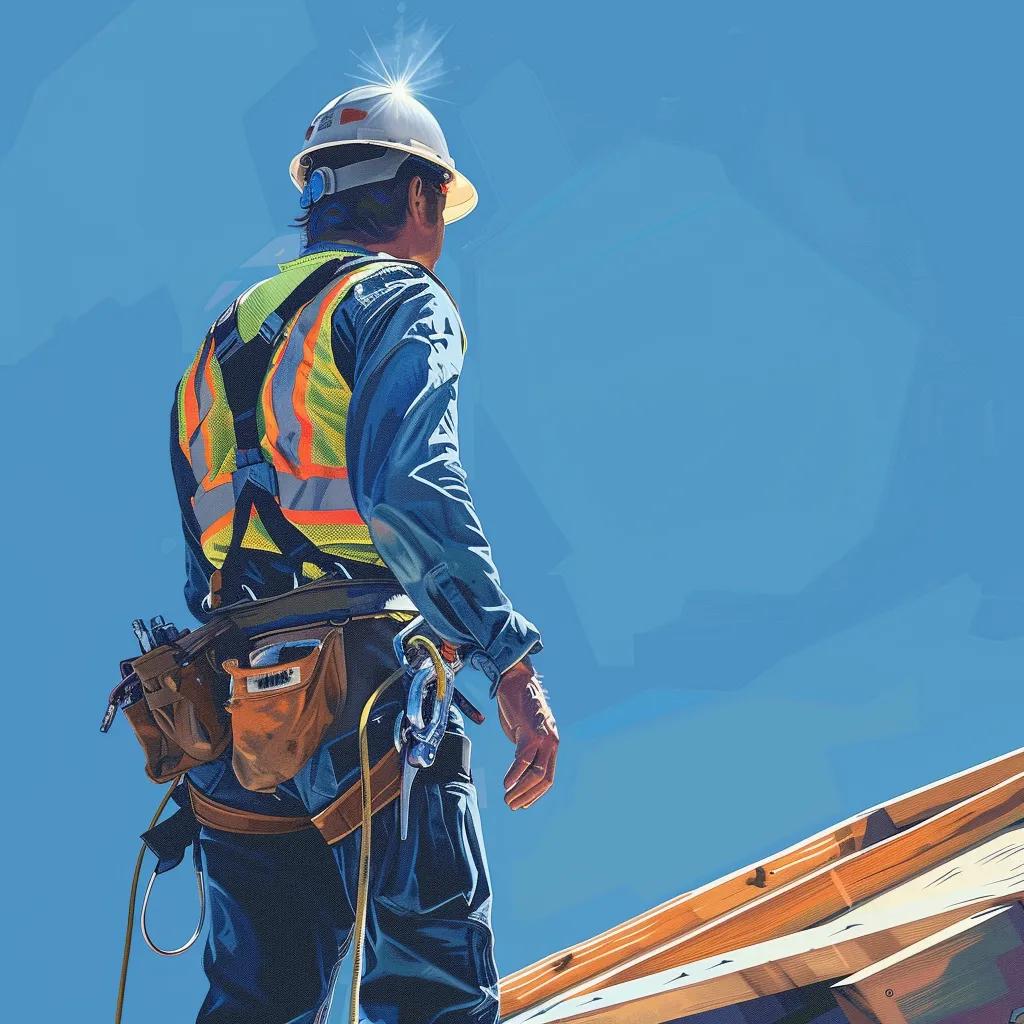OSHA Fall Protection Rules for Forklift Operators | Warehouse Safety Guide
OSHA Fall Protection Requirements: A Simple Guide for Forklift Operators
Falls are one of the leading causes of workplace injuries in warehouses and industrial facilities. For forklift operators, fall hazards often go unnoticed—until it’s too late. Whether working on elevated order pickers, loading docks, or near open edges, fall protection is a must.
This guide breaks down OSHA’s fall protection requirements specifically for forklift operations. You’ll learn how to identify hazards, choose the right gear, train your team, and avoid expensive citations. Everything in this guide is aligned with OSHA’s general industry standards under 29 CFR 1910.
What Are OSHA’s Main Fall Protection Rules for Forklift Use?
OSHA requires fall protection in general industry jobs when workers are exposed to fall hazards of 4 feet or more. For forklift operators, these rules often apply in three key scenarios:
- Working on elevated order pickers (especially above 6 feet)
- Driving near unguarded dock edges or mezzanines
- Operating outdoors on sloped surfaces or uneven ramps
These rules fall under 29 CFR 1910.28 (fall protection) and 1910.178 (powered industrial trucks).
Where Are Fall Hazards for Forklift Operators Most Common?
Here are high-risk areas where forklift operators may be exposed to fall hazards:
- Order picker platforms without proper tie-off systems
- Loading docks without dock-edge barriers or dock levelers
- Trailer edges when loading/unloading without dock locks
- Elevated storage platforms or mezzanines lacking guardrails
- Outdoor ramps with steep slopes or drop-offs
These hazards can lead to injuries, product damage, or OSHA penalties if not addressed properly.
How Can Forklift Operations Reduce Fall Risks?
OSHA encourages using the Hierarchy of Controls to reduce fall hazards. Here’s how it applies in a warehouse setting:
- Eliminate the hazard – Reroute forklift traffic away from unprotected edges or use enclosed order pickers.
- Use passive protection – Install guardrails or dock barriers around elevated areas and ramps.
- Use restraint systems – Operators using elevated platforms or order pickers must use personal fall restraint systems.
- Use fall arrest systems – If there’s a risk of falling, workers should wear a full-body harness with a properly anchored lanyard.
- Administrative controls – Post warning signs, mark hazard zones, and offer clear training on procedures.
What Fall Protection Gear Should Be Used with Forklifts?
For forklift operators, especially those on elevated work platforms, OSHA may require:
- Harnesses and tethers for order picker lifts (PFAS)
- Guardrails around raised aisles and mezzanines
- Edge protectors or dock plates to prevent drive-offs
- Warning lines or tape zones in loading areas
All equipment must meet ANSI Z359 standards and be inspected regularly.
What Should a Forklift Fall Protection Plan Include?
If your facility uses forklifts near elevation risks, you need a written fall protection plan. It should include:
- A hazard assessment of all forklift-accessible elevated areas
- Details on what equipment is required (guardrails, PFAS, etc.)
- Training plans for operators and maintenance staff
- A clear rescue plan in case someone falls and becomes suspended
- Inspection schedules and maintenance logs
Assign a competent person to inspect systems, review the plan regularly, and stay updated on OSHA rules.
What Happens If You Ignore OSHA Fall Protection Rules?
Violations can be expensive:
- $15,000+ per incident for serious violations
- $150,000+ for willful or repeat offenses
- Work stoppages and possible injury lawsuits
- Higher insurance premiums and lost productivity
Forklift operators are often overlooked when it comes to fall safety—but they’re at just as much risk as construction workers when working at height.
Forklift Fall Protection Training: What Does OSHA Require?
Any forklift operator who works near a fall hazard needs fall protection training under 29 CFR 1910.30. That training should cover:
- Spotting fall risks in warehouse environments
- Using harnesses and lanyards correctly
- Checking PFAS gear before use
- Emergency rescue procedures
Operators should receive refresher training when:
- Equipment changes
- A near miss or fall happens
- Procedures are updated
- The competent person requires it
Pair forklift certification with a fall protection course to ensure your team meets OSHA and ANSI Z359 standards.
Common Fall Protection Mistakes in Warehouses
- Order picker drivers not tied off
- Missing guardrails on mezzanines or docks
- No rescue plan for elevated platform work
- Damaged harnesses still in use
- No documentation of fall protection training
Fixing these gaps now prevents citations and injuries later.
Frequently Asked Questions: Fall Protection for Forklift Operators
Q: Do all forklift operators need fall protection?
Only if they work at heights, such as on order pickers or near elevated edges.
Q: What’s the most common warehouse violation?
Operators working on elevated platforms without a fall restraint or arrest system.
Q: Can guardrails replace harnesses?
Yes, if guardrails are properly installed and meet OSHA strength and height requirements. But order pickers typically require both.
Q: What if a forklift operator falls while tied off?
You must have a rescue plan in place. Workers stuck in a harness can suffer suspension trauma in minutes.
Q: How often should harnesses be inspected?
Before each use by the worker, and every 6 months by a qualified person.
